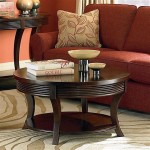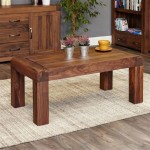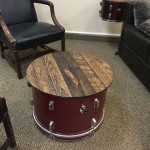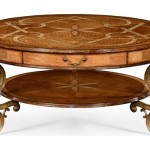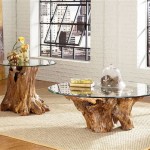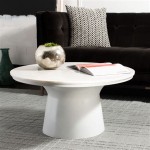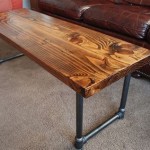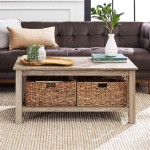Round Side Table Design: A Comprehensive Overview
Round side tables represent a versatile and functional furniture piece, seamlessly integrating into various interior design schemes. Their inherent circular form offers a soft, organic contrast to the often angular lines of sofas, chairs, and other architectural elements. The absence of harsh corners contributes to a more fluid and welcoming atmosphere, making them an ideal addition to living rooms, bedrooms, and even office spaces. Understanding the nuances of round side table design involves considering materials, dimensions, styles, and intended uses to make informed purchasing decisions.
The design of a round side table extends beyond pure aesthetics. Functionality plays a crucial role in selecting the appropriate table for a particular space. Factors such as surface area, height, and weight capacity must be carefully evaluated to ensure the table adequately serves its purpose, whether it be holding a lamp, books, beverages, or decorative items. Moreover, the table's durability and maintenance requirements are important considerations, particularly in high-traffic areas or homes with children and pets.
Material Selection in Round Side Table Design
The choice of material significantly impacts the aesthetic appeal, durability, and overall cost of a round side table. A wide range of materials are employed in their construction, each possessing unique characteristics. Wood, metal, glass, and various composites are among the most common options.
Wood: Wooden round side tables offer a classic and timeless appeal. Different types of wood, such as oak, maple, walnut, and pine, exhibit distinct grain patterns, colors, and hardness levels. Oak, known for its strength and durability, is a popular choice for traditional and rustic designs. Maple provides a smoother, more uniform surface, making it suitable for painted or stained finishes. Walnut, with its rich, dark tones, adds a touch of elegance and sophistication. Pine, a softer and more affordable option, is often used in casual or farmhouse-style settings. Solid wood tables tend to be more expensive but offer superior durability and longevity. Veneered wood tables, consisting of a thin layer of wood adhered to a substrate, can provide a similar aesthetic at a lower price point.
Metal: Metal round side tables offer a contemporary and industrial aesthetic. Common metals used include steel, iron, brass, and aluminum. Steel and iron provide exceptional strength and stability, making them ideal for tables intended to support heavier items. Brass adds a touch of glamour and warmth, while aluminum is lightweight and corrosion-resistant, making it suitable for outdoor use. Metal tables can be finished in a variety of ways, including powder coating, painting, and plating, to achieve different looks. Powder coating offers a durable and scratch-resistant finish, while painting allows for a wider range of color options. Plating, such as chrome or nickel, adds a sleek and polished appearance.
Glass: Glass round side tables offer a modern and minimalist aesthetic. They create a sense of openness and airiness, making them a good choice for smaller spaces. Glass can be tempered for added strength and safety. Clear glass allows light to pass through, showcasing the underlying structure of the table. Frosted or colored glass can add a touch of privacy or personality. Glass tables often feature metal or wooden frames for support and stability.
Composites: Composite materials, such as MDF (Medium-Density Fiberboard) and particleboard, are often used in the construction of round side tables. These materials are typically more affordable than solid wood and can be easily molded into various shapes. They are often finished with veneers or laminates to mimic the appearance of wood or other materials. While composites may not be as durable as solid wood, they can still provide a functional and aesthetically pleasing option for budget-conscious consumers.
Dimensions and Proportions
The dimensions of a round side table are crucial for ensuring its functionality and visual harmony within a room. The height and diameter of the table should be proportional to the surrounding furniture and the intended use of the table. A table that is too tall or too short will appear awkward and may not be practical.
Height: The height of a round side table should typically be within a few inches of the armrest height of the adjacent sofa or chair. This allows for easy access to items placed on the table, such as drinks or remote controls. For use next to a bed, the table height should be similar to the mattress height. A lamp table might be taller to accommodate the lamp base and provide adequate lighting.
Diameter: The diameter of the round side table should be appropriate for the size of the room and the amount of surface area needed. A smaller diameter table is suitable for tight spaces or for holding a single item, such as a lamp or a small plant. A larger diameter table provides more surface area for multiple items, such as books, beverages, and decorative objects. Consider the distance between the table and other furniture to ensure adequate walking space.
Proportion Considerations: The overall proportions of the table, including the thickness of the tabletop and the size of the base or legs, should be visually balanced. A table with a thin tabletop and a bulky base may appear unstable, while a table with a thick tabletop and spindly legs may appear top-heavy. Careful consideration of these proportions will ensure that the table is both functional and aesthetically pleasing.
Styles and Design Aesthetics
Round side tables are available in a wide range of styles, from traditional to contemporary, allowing homeowners to select pieces that complement their existing decor. Understanding the characteristics of different design styles is essential for making informed purchasing decisions.
Traditional: Traditional round side tables often feature ornate details, such as carved legs, turned spindles, and decorative hardware. They are typically made of wood, such as oak, maple, or cherry, and finished in a dark stain or paint. Traditional tables may also incorporate elements such as drawers or shelves for added storage.
Contemporary: Contemporary round side tables are characterized by clean lines, simple shapes, and a minimalist aesthetic. They are often made of metal, glass, or composite materials, and finished in neutral colors such as black, white, or gray. Contemporary tables may also feature geometric shapes or asymmetrical designs.
Modern: Modern round side tables are similar to contemporary tables but often incorporate bolder colors and more unconventional materials. They may feature elements such as lucite, acrylic, or stainless steel. Modern tables often emphasize functionality and practicality.
Rustic: Rustic round side tables are characterized by their natural, unfinished look. They are often made of reclaimed wood or other natural materials and may feature imperfections such as knots, cracks, and rough edges. Rustic tables often evoke a sense of warmth and authenticity.
Industrial: Industrial round side tables combine elements of both rustic and modern design. They often feature metal frames with wooden tabletops and may incorporate details such as exposed hardware and distressed finishes. Industrial tables often evoke a sense of urban grit and functionality.
Beyond these broad categories, many other design styles exist, including mid-century modern, bohemian, and coastal. The key is to select a table that complements the overall aesthetic of the room and reflects the homeowner's personal taste.
Furthermore, the functionality of the round side table should align with the intended use. If the table is primarily intended to hold a lamp, its design should accommodate the lamp's size and style. If the table is intended to hold drinks and snacks, it should have a durable and easy-to-clean surface. If the table is intended for storage, it should feature drawers or shelves.
Ultimately, the selection of a round side table is a personal decision that should be based on a combination of factors, including aesthetics, functionality, and budget. By carefully considering these factors, homeowners can choose a table that will enhance the beauty and functionality of their living spaces for years to come.

Constance Side Table

Vis A Ii Brushed Gold Side Table Tall Finn Avenue

Nino Modern Round Side Table 49l X 50h Black

Fidelio Round Side Table Proof Living Singapore

Elio Wooden Round Coffee Table Singapore Comfy

Ethnicraft Oak Round Mikado Coffee Table By Originals

Dante Gold Side Table Round

Talor Japandi Solid Wood Round Coffee Table Side 65d X 45h

Diy Round Side Table Shanty 2 Chic

Sabrina White Round Coffee Table
Related Posts

